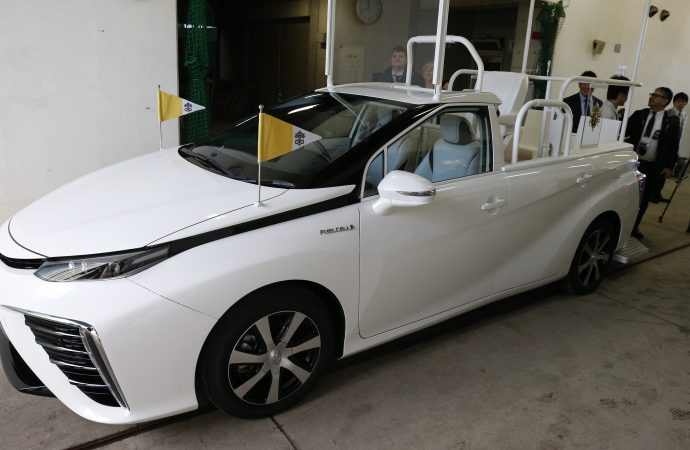The Vatican seeks to replace its service vehicles with a fully electric fleet

As part of its long-term efforts to respect the environment and reduce resource use, the Vatican said it is gradually seeking to replace all of its service vehicles with a fully electric fleet.
"We will soon begin collaborating with car manufacturers who are able to provide electric vehicles for evaluation," said Roberto Mignucci, director of workshops and equipment for the Vatican City State Government Office.
He told L'Osservatore Romano, the Vatican newspaper, on November 10 that an electric fleet was perfect as the average annual mileage for each of their many service and support vehicles is less than 4.000 miles given the small size of the city-state of. 109 acres and the close proximity of its extraterritorial properties, such as the papal villa and farm in Castel Gandolfo, 13 miles south of Rome.
The Vatican plans to increase the number of charging stations it has already installed for electric vehicles to include other extraterritorial properties surrounding the basilicas of Santa Maria Maggiore, San Giovanni in Laterano and San Paolo fuori le mura, he said.
Over the years, several car manufacturers have donated different types of electric vehicles to the pope, and the Japanese bishops' conference delivered a hydrogen-powered popemobile to the pope in October.
The popemobile, a modified Toyota Mirai, was built for Pope Francis' trip to Japan in 2019. It uses a fuel cell system that generates electricity from a reaction between hydrogen and oxygen, without producing exhaust emissions other than water vapor. Manufacturers said it can travel around 300 miles on a "full tank" of hydrogen.
Mignucci told L'Osservatore Romano that the Vatican has long sought to reduce its impact on the environment and has stepped up efforts as technology and materials have become more readily available.
It installed double-glazed windows and high-efficiency heating and cooling systems, improved insulation, and purchased the latest energy-saving, low-loss electrical transformers found on the market, he said.
Unfortunately, he added, there isn't enough space or viable roofs for more solar panels.
Thanks to the generosity of a company based in Bonn, the Vatican installed 2.400 solar panels on the roof of the Paul VI Hall in 2008 and, in 2009, the Vatican installed several high-tech solar collectors to help heat and cool the its buildings.
In addition to the Vatican's reduction of greenhouse gases, Mignucci said, it has also made progress towards a total elimination of the use of other gases as part of the Holy See's agreement to join the Kigali amendment. The amendment calls on nations to reduce the production and use of hydrofluorocarbon refrigerants as part of the Montreal Protocol on Substances that Deplete the Ozone Layer.